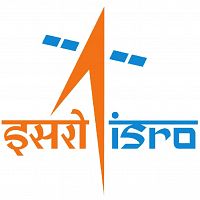›Polarimetric SAR Remote Sensing for Characterization of Manmade and Natural Features
About the Course
The advancement of earth observation has opened new avenues of research in the field of earth sciences. With the technological advancements in geo-information sciences, remote sensing has become an effective method for detection and investigation of various factors. The visible and infra-red regions are known as optical regions, and the microwave region (1mm - 1m) is considered as non-optical region. Systems operating in optical region are being used for several decades and therefore, are more advanced and widely employed. However, their use is limited by availability of sunlight and interference of the atmospheric conditions such as haze and cloud cover especially in the tropical regions. Therefore, the use of microwave or radar remote sensing is preferred in such areas. Radar imaging through Synthetic Aperture Radar (SAR) systems has revolutionized and expanded the technology of Microwave remote sensing especially in thematic applications using different techniques like SAR Polarimetry (PolSAR), SAR Interferometry (InSAR), Persistent Scatterer Interferometric Synthetic Aperture Radar (PSInSAR) and Polarimetric SAR Interferometry (PolInSAR).
After interaction with any object, the energy associated with the electromagnetic wave gets distributed in two components: (i) some part of the electromagnetic energy is absorbed by the interacting object itself and (ii) the rest is reradiated in all possible directions. Due to re-radiation in different directions, only a part of electromagnetic energy is received by the SAR system. Thus, absorption and the partial capture of reradiated energy by the SAR leads to the loss of valuable information that needs to be compensated. To overcome this problem and to extract the maximum information, multipolarized polarimetric data has been widely used.
Objective of the Course/Workshop
The overall objective of this training-cum-workshop is to make the awareness among users/researchers/professionals about the concept of Polarimetric SAR Remote Sensing and disseminate knowledge and practical applications on use of PolSAR data.
Eligibility
The training cum workshop is designed for professionals, faculty, scientists, and researchers (JRF/SRF/RA) in working geospatial technologies. Only Indian nationals can apply for this training cum workshop. Preference will be given to the employees of Govt. and public sector organizations. In case a large number of applications are received, the selection will be done based on the criteria decided by IIRS.
Track this event on your Apple calendar














 India
India